-
Car Reviews
- All reviews
- Midsize SUVs
- Small cars
- Utes
- Small SUVs
- Large SUVs
- Large cars
- Sports SUVs
- Sports cars
- Vans
Latest reviews
- Car News
-
Car Comparisons
Latest comparisons
- Chasing Deals
The previous-gen Niro lived a short life in Australia, but the small electric SUV showed promise. The new car’s ride quality, refinement and visual appeal have increased massively
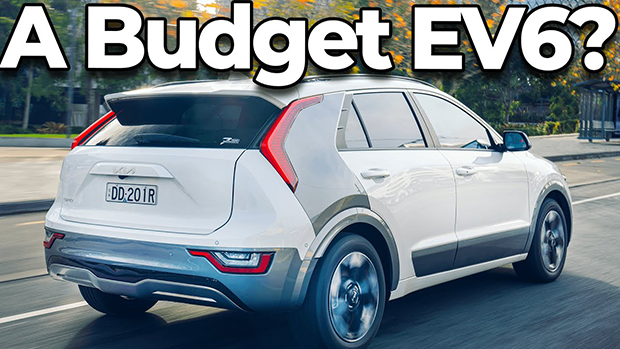
Kia is gearing up for an electric vehicle offensive over the next decade, kicking off with 14 all-new electric models on dedicated EV platforms – so where does the new Niro, a hybrid and fully-electric small SUV based on a petrol-car architecture, fit in?
Well, according to Kia, the global demand for the Niro remains strong – so much so that in its final sales year, the Niro finished second behind the Tesla Model 3 in UK sales charts. That’s not the case in Australia, but the ‘DE’ Niro arrived here three years after its global launch without the brand’s bespoke suspension and steering tune for our market.
The heavily revised new Niro is a bigger car: 65mm longer, 20mm wider and 10mm higher, and it now packs a proper Australian chassis tune, too.. It also looks better, picking up design cues from Kia’s Sportage midsize SUV and its ‘opposites unite’ design philosophy… and perhaps Audi’s R8 side blades.
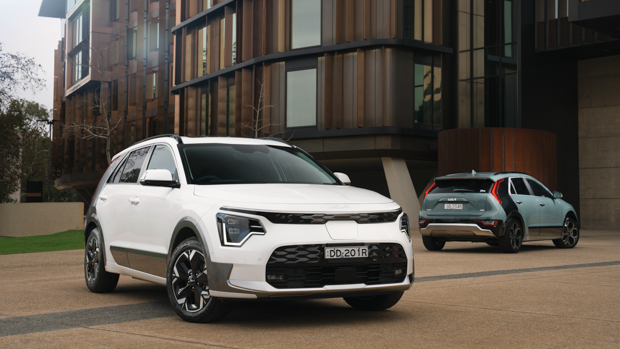
This time around, Kia has chosen not to offer the plug-in hybrid Niro in Australia (though it is homologated for our market, so that could change). The pricey but long-range electric version returns with the promise of 460km of zero-emission driving – one kilometre more than in the old Niro EV.
Kia also offers a self-charging hybrid powertrain ($44,380 before on-road costs) that would compete directly with the Toyota C-HR hybrid. In previous ‘DE’ Niro guise, the sales split showed private buyers were most enamoured with the range-topping EV with the base hybrid popular with fleet operators.
There is, of course, an EV6-sized elephant in the room. While the hybrids are reasonably attractively priced, the fully-electric Niro models are dear. The new Niro GT-Line EV starts at $72,100 before on-road costs in Australia, making it only $7490 cheaper than a RWD EV6 GT-Line (now $79,590 before on-road costs after a recent price bump).
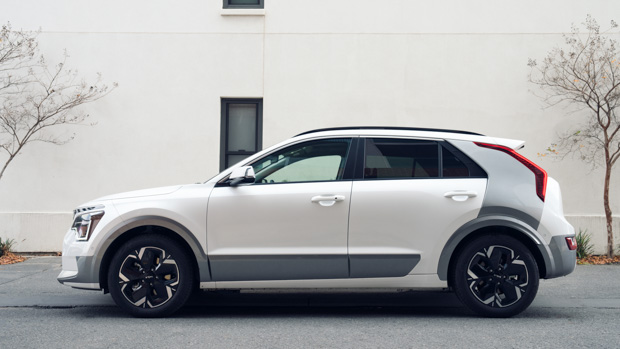
Kia Australia says it will be able to supply around 75 Niros each month, and it expects dealers will carry some stock – a shock in tightly-constrained 2022. So next to an EV6 – which you’ll have to stand in line patiently for about two years to get your hands on – is it worth considering a Niro electric like the GT-Line we spent the lion’s share of time in at the car’s Australian launch?
It is unusual for any vehicle with a carryover powertrain to suddenly lose more than a third of the torque in the old motor. It’s even more unusual for us to praise such a move – and yet, both have happened here.
Like its cousin, the Hyundai Kona Electric, the old Kia Niro EV produced stout outputs of 150kW of power and 395Nm of torque. The latter figure excited tyres off the line and could even spin the wheels accelerating from 60km/h in the wet.
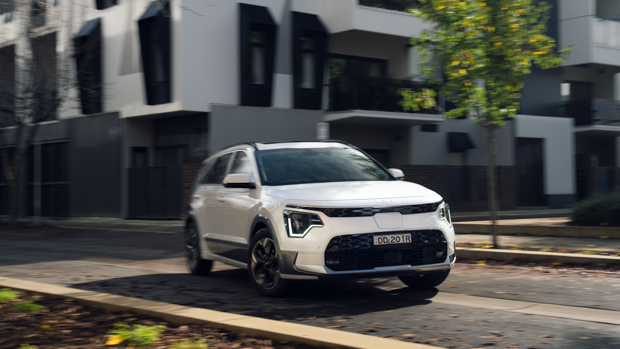
Now, the Niro Electric makes a bit more power at 155kW, but 140Nm less torque. And the 255Nm now on tap for the front wheels – no AWD version is offered – seems distinctly more appropriate. Kia says the torque reduction was done in the name of driveability and that has worked.
The old Niro was a bit of a wild ride with torque steer and scrabbly acceleration under full throttle. The new car’s amount of grunt feels better matched to the front 215/55 R17 Continental EcoContact 6 tyres, while managing a respectable 0-100km/h sprint of 7.8 seconds.
More goodness is found in corners, where Kia’s Australian suspension tuning keeps this 1772kg SUV planted through the bends. It isn’t inspiring or exciting, but the Niro is a confidence-inspiring and reasonably talented family car on a back road.
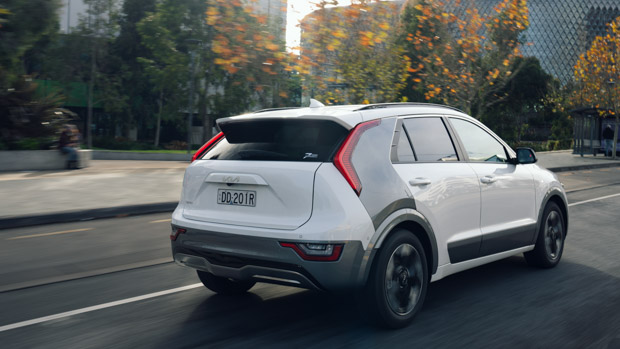
The steering is quite impressive. It builds weight naturally through corners, and though the electric car’s rack is a little slower than the hybrid’s, it matches the Niro’s dynamics well. It’s certainly better than the EV6’s claggy steering response, even if the Niro’s front-drive layout makes it the less dynamic overall.
Cornering wasn’t a weak spot for the old Niro, but ride comfort was. Now, the Aussie-tune has really improved is the Niro’s low-speed ride which was average at best before. Both the EV and hybrid model’s ZF Sachs dampers round out bumps and cushion blows from speed humps without excess body movement.
Good visibility also aids the Niro’s ease-of-use around town with less compromising blind spots than a more fastback-style small SUV such as the Toyota C-HR. There is now an auto-regen program that uses the front radar sensor to automatically adjust the level of regen in traffic that works well. There are also five selectable regen levels, as well as ‘i-Pedal’ for near seamless one-pedal driving.
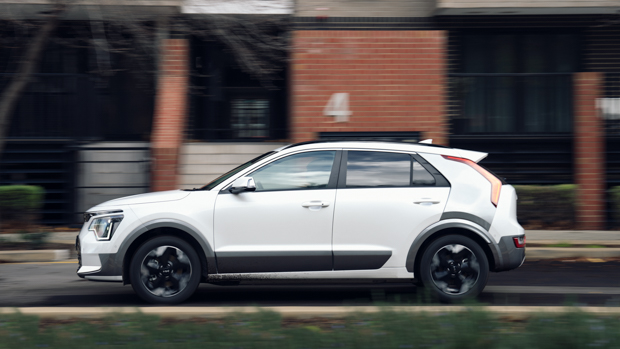
The level of safety has been improved too – though the Niro is yet to be evaluated by ANCAP – starting with the stiffer body shell that uses more hot-stamped sections for rigidity. Across the Niro range, the front AEB now has junction detection capability, there’s also reverse AEB and blind-spot monitoring with collision mitigation. A well-tuned adaptive cruise control and lane-centring assist make cruising freeways in the SG2 Niro easy.
Improvements in driving dynamics are one thing, but the new Niro’s heavily upgraded ‘K3’ platform has given this SUV a flavour inside that was sorely lacking in the anonymous DE Niro.
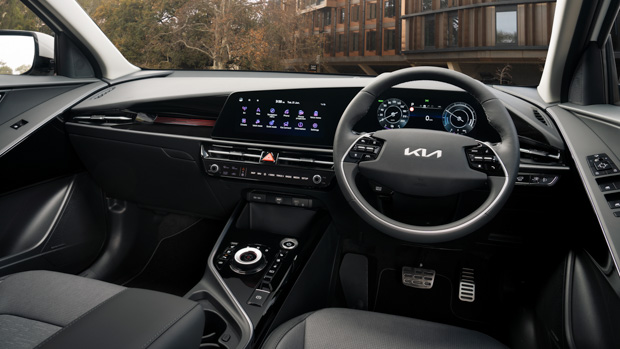
The star of the cabin are two 10.25-inch screens integrated into a curved piece of glass nestled into the dash. The infotainment system may not have the customisability or wow-factor of a Tesla Model Y’s all-encompassing touchscreen or a Polestar 2’s Android system, but it’s simple to interact with and offers wired Apple CarPlay and Android Auto.
Kia has chosen the Niro as the first model to showcase its connected technology. A phone app can be used to control lights, pre-heat or cool the cabin, unlock the car from a distance, set off a horn and light show as well as send locations to the onboard nav. Over-the-air software updates are not integrated yet, but will come in a future upgrade.
There has been a focus on improving cabin materials too, and the GT-Line’s faux-leather upholstery feels nicer than the last car. The electrically-adjustable front seats score three-stage heating and cooling, and the funky two-spoke steering wheel (lifted straight from the EV6) is heated.
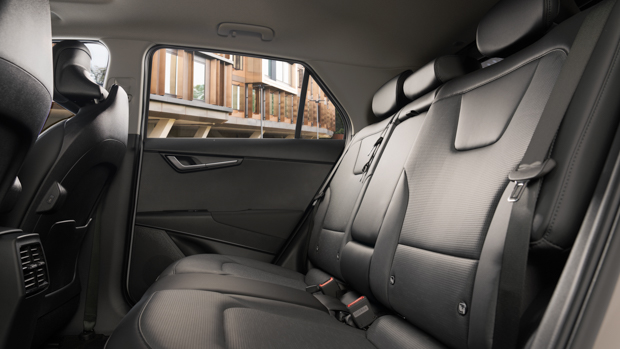
Two deployable cup holders sit beneath a comfy central armrest and niceties such as a Qi wireless charging pad, USB-A and USB-C ports, bottle holders in the doors and ambient lighting finish off the Niro’s dramatic cabin.
The rear quarters of the Niro are generous for its external dimensions with good space for me behind my driving position even at 188cm. Only the high, flat floor and hard door tops compromised comfort somewhat. There is a fold-down armrest and adjustable air vents, three-pin socket and the backs of the comfortable front seats double as coat holders.
There is a total of 475 litres of luggage space behind the seats with an additional 20L front boot. Under the boot floor is further storage for charging cables, the clever vehicle-to-load adapter that would allow you to run a coffee machine, lighting for photography or charge personal devices such as a laptop
One of the oddities of the DE Niro was its expensive service costs. The new car retains 12 month/15,000km service intervals that are inconveniently short for an electric vehicle, but the price is now $1754 for a seven-year service pack – 40 percent lower than the old car.
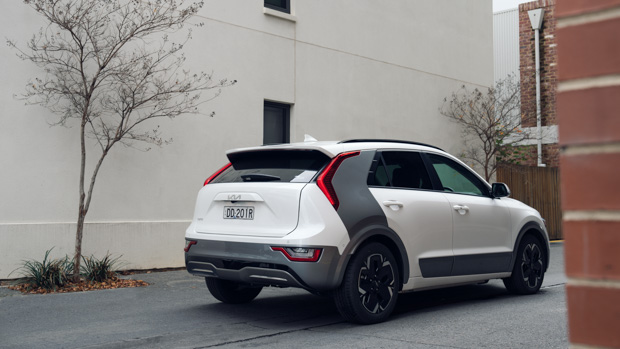
This compares more favourably to rivals, though Polestar and Volvo’s three years of free servicing still seems like a sharper deal.
Kia’s seven year/unlimited kilometre warranty applies to the Niro EV and hybrid, though the high-voltage electrics are covered by the brand’s global seven year/150,000km warranty.
As it doesn’t use the E-GMP platform, the Niro can’t match the EV6’s amazing 350kW theoretical maximum charging speed. Instead, the Niro’s older platform and battery architecture can only take about 100kW DC, meaning it will take 45 minutes to charge from 10-80 percent on a 350kW charger.
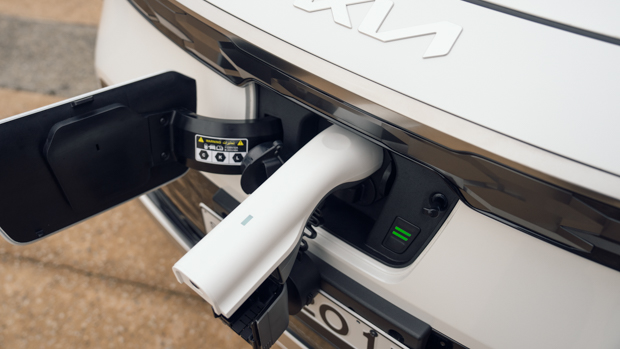
Charging from 0-100 percent using a three-phase 11kW charger should take around six and a half hours. With all that electricity in the 64.8kWh usable battery, Kia claims the Niro has a range of 463km (WLTP) that relies on a 14kWh/100km vehicle consumption figure.
During our loop in the Adelaide Hills, the electric Niro averaged 18kWh/100km for a projected range of 361km. A future run back on the Chasing Cars Sydney test loop should give a better indication on the Niro’s real-world efficiency.
The Kia Niro is a lot better looking than before, and its Australia-honed ride and handling shows what Kia can do when given the time and resources Covid lockdowns didn’t allow.
The Niro hybrid is also worth considering, as the interior’s excellent packaging makes it a more practical alternative than a Toyota C-HR or Honda HR-V hybrid.
With an electric powertrain that is relatively efficient in the real world the Niro EV is an attractive proposition, too, though its price proximity to the EV6, Polestar 2 and Tesla Model 3 makes it hard to sing the Niro electric’s praises.
Of course, more of the Niro’s closest rivals may spike in price shortly – and for a start none of them are as readily available as the Niro promises to be – but until that happens, the Niro remains a sweet-driving small SUV that’s price is perhaps a little ahead of its time.
Variant tested EV GT-LINE GREY C PILLAR
Key specs (as tested)
About Chasing cars
Chasing Cars reviews are 100% independent.
Because we are powered by Budget Direct Insurance, we don’t receive advertising or sales revenue from car manufacturers.
We’re truly independent – giving you Australia’s best car reviews.
The estimate provided does not take into account your personal circumstances but is intended to give a general indication of the cost of insurance, in order to obtain a complete quote, please visit www.budgetdirect.com.au. Estimate includes 15%^ online discount.
^Conditions Apply
Budget Direct Insurance arranged by Auto & General Services Pty Ltd ACN 003 617 909(AGS) AFSL 241 411, for and on behalf of the insurer, Auto & General Insurance Company Limited(ABN 42 111 586 353, AFSL 285 571).Because we don’t know your financial needs, we can’t advise you if this insurance will suit you. You should consider your needs and the Product Disclosure Statement before making a decision to buy insurance. Terms and conditions apply.
Indicative quote based on assumptions including postcode , 40 year old male with no offences, licence suspensions or claims in the last 5 years, a NCD Rating 1 and no younger drivers listed. White car, driven up to 10,000kms a year, unfinanced, with no modifications, factory options and/or non-standard accessories, private use only and garaged at night.
^Online Discounts Terms & Conditions
1. Discounts apply to the premium paid for a new Budget Direct Gold Comprehensive Car Insurance, Third Party Property Only or Third Party Property, Fire & Theft Insurance policy initiated online on or after 29 March 2017. Discounts do not apply to optional Roadside Assistance.
2. Discounts do not apply to any renewal offer of insurance.
3. Discounts only apply to the insurance portion of the premium. Discounts are applied before government charges, taxes, levies and fees, including instalment processing fees (as applicable). The full extent of discounts may therefore be impacted.
4. We reserve the right to change the offer without notice.